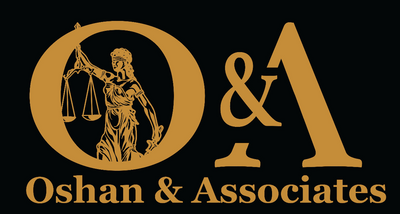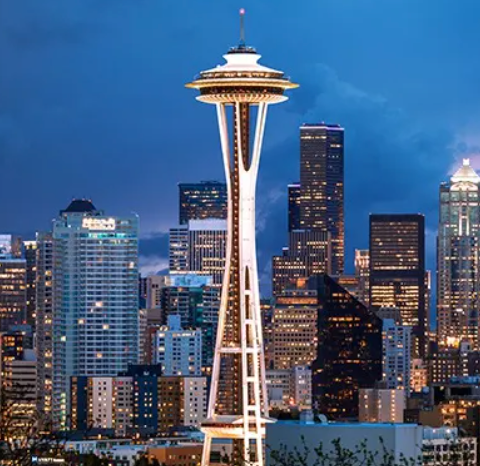In Washington State right of way laws dictate who has the legal right to proceed first in various traffic situations thereby reducing confusion and preventing accidents. Understanding these laws is crucial for all drivers, pedestrians, and cyclists to ensure safety and compliance. Washington State personal injury lawyers at Oshan & Associates explore Washington State's right of way laws, providing verifiable facts and statistics to help you understand their importance.
Right of way laws govern the priority of movement on the roadways. These laws establish who must yield to whom in specific situations, ensuring smooth traffic flow and reducing the likelihood of collisions. Right of way rules apply to various scenarios, including intersections, crosswalks, and when merging onto highways.
- Controlled Intersections:
- The light dictates who has the right of way.
- A green light allows vehicles to proceed, while a red light requires them to stop.
- Uncontrolled Intersections:
- the driver on the left must yield to the driver on the right. This rule is particularly relevant when two vehicles approach an intersection simultaneously.
- T-Intersections:
- the driver on the terminating road must yield to traffic on the through road.
Right of Way Laws for Pedestrian Crossings in Washington State
RCW 46.61.235 emphasizes that drivers must yield the right of way to pedestrians at crosswalks.
-
Marked Crosswalks - drivers must yield to pedestrians
-
Unmarked Crosswalks - drivers must also yield to pedestrians
-
School Zones - in school zones, drivers must be particularly vigilant and yield to children crossing the street, especially when school is in session
Right of Way Laws of Roundabouts in Washington State
Washington State has specific guidelines for navigating roundabouts, as outlined in RCW 46.61.080. Vehicles already in the roundabout have the right of way over those entering. Drivers should yield to traffic within the roundabout and proceed when safe.
Right of Way Laws of Emergency Vehicles in Washington State
According to RCW 46.61.210, drivers must yield to emergency vehicles, including police cars, fire trucks, and ambulances, when they are responding to emergencies. Drivers should pull over to the right side of the road and stop until the emergency vehicle passes.
Right of Way Laws of Bicycles and Motorcycles in Washington State
Bicyclists have the same rights and responsibilities as motor vehicle operators under Washington State law. Therefore, drivers must yield to cyclists in designated bike lanes and on the road. RCW 46.61.755 emphasizes that motor vehicles should not obstruct or impede the movement of bicycles.
Statistics on Right of Way Violations and Accidents
Understanding the implications of right of way laws is crucial, especially when considering the statistics associated with violations:
- According to the Washington Traffic Safety Commission, there were 51,000 reported crashes in Washington State in 2020, with approximately 10% attributed to failure to yield.
- The National Highway Traffic Safety Administration (NHTSA) reported that right of way violations accounted for around 20% of all motor vehicle crashes in the United States.
- Data from the Washington Department of Transportation indicates that pedestrian fatalities increased in recent years, with many of these incidents resulting from vehicles failing to yield at crosswalks. In 2021, there were 75 pedestrian fatalities in Washington State, highlighting the importance of adhering to right of way laws.
Consequences of Violating Right of Way Laws
Failing to yield the right of way can have serious consequences, including:
- Accidents and injuries.
- Legal penalties such as citations, fines, points or even criminal charges.
- Increased insurance premiums because of past risky driving behavior.
How to Ensure Compliance with Right of Way Laws in Washington State
-
Stay alert and look for:
- pedestrians
- cyclists
- other vehicles when approaching intersections or crosswalks.
-
Obey Traffic Signals:
- Follow traffic lights and signals.
- Yield to pedestrians at crosswalks
- Be cautious around school zones.
-
Use Turn Signals to indicate your intentions to other drivers:
- When changing lanes
- When turning at intersections.
-
Know Washington State’s right of way laws and regulations.
-
Practice defensive driving and assume not all drivers might obey the laws.
Right of way laws are vital for ensuring the safety and efficiency of traffic flow in Washington State. Understanding these laws helps drivers, pedestrians, and cyclists navigate the roads safely and responsibly. By adhering to right of way rules, individuals can reduce the risk of accidents and contribute to a safer community. At Oshan & Associates, we are dedicated to advocating for victims of traffic accidents and helping them understand their rights and responsibilities. If you or a loved one has been involved in an accident due to a right of way violation, our experienced team is here to provide support and guidance.
























